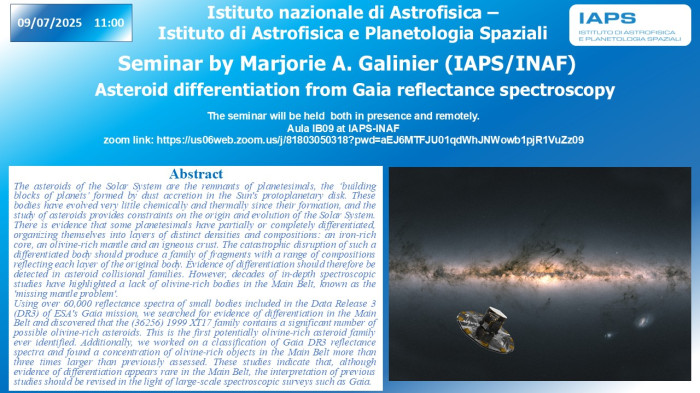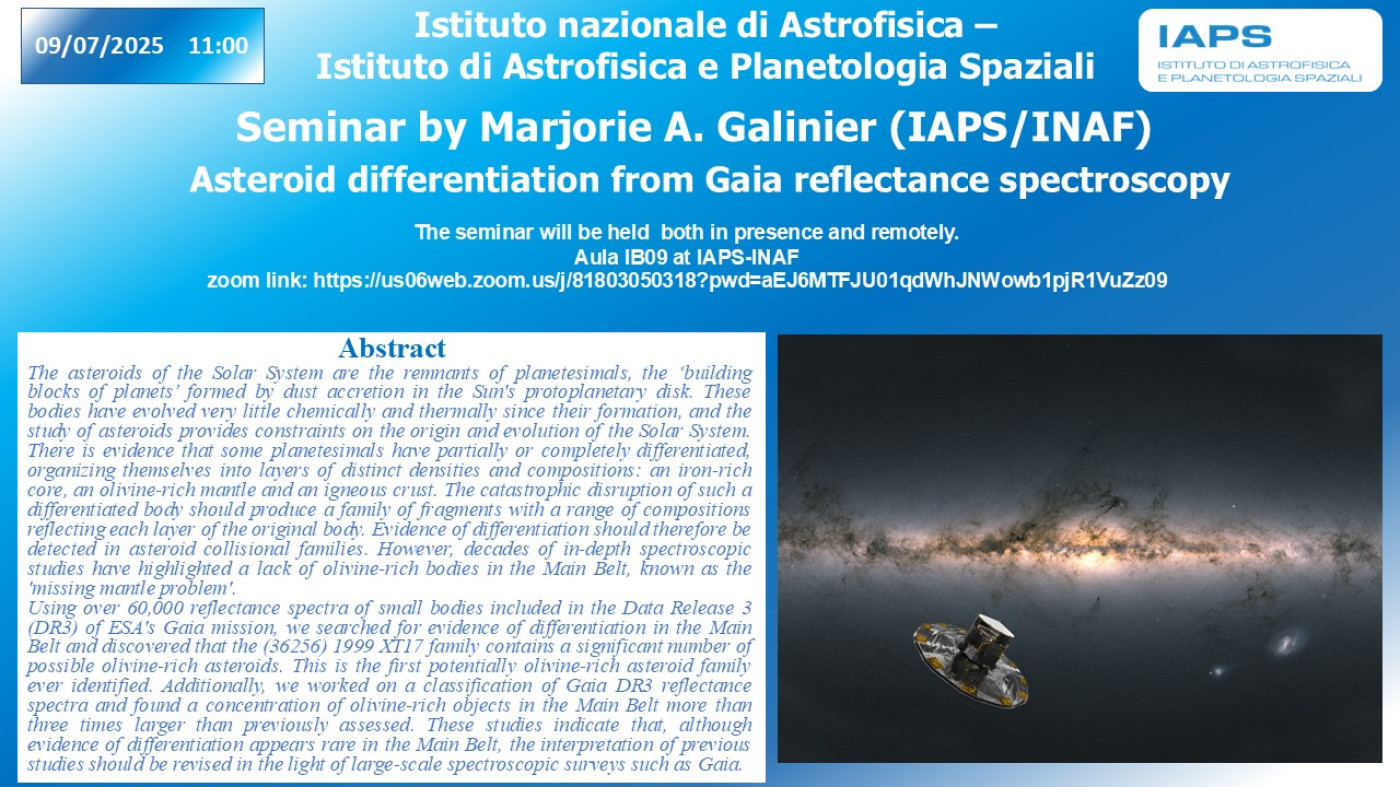Asteroid differentiation from Gaia reflectance spectroscopy
Affiliation: IAPS-INAF

The asteroids of the Solar System are the remnants of planetesimals, the ‘building blocks of planets’ formed by dust accretion in the Sun's protoplanetary disk. These bodies have evolved very little chemically and thermally since their formation, and the study of asteroids provides constraints on the origin and evolution of the Solar System. There is evidence that some planetesimals have partially or completely differentiated, organizing themselves into layers of distinct densities and compositions: an iron-rich core, an olivine-rich mantle and an igneous crust. The catastrophic disruption of such a differentiated body should produce a family of fragments with a range of compositions reflecting each layer of the original body. Evidence of differentiation should therefore be detected in asteroid collisional families. However, decades of in-depth spectroscopic studies have highlighted a lack of olivine-rich bodies in the Main Belt, known as the 'missing mantle problem'.
Using over 60,000 reflectance spectra of small bodies included in the Data Release 3 (DR3) of ESA's Gaia mission, we searched for evidence of differentiation in the Main Belt and discovered that the (36256) 1999 XT17 family contains a significant number of possible olivine-rich asteroids. This is the first potentially olivine-rich asteroid family ever identified. Additionally, we worked on a classification of Gaia DR3 reflectance spectra and found a concentration of olivine-rich objects in the Main Belt more than three times larger than previously assessed. These studies indicate that, although evidence of differentiation appears rare in the Main Belt, the interpretation of previous studies should be revised in the light of large-scale spectroscopic surveys such as Gaia.


